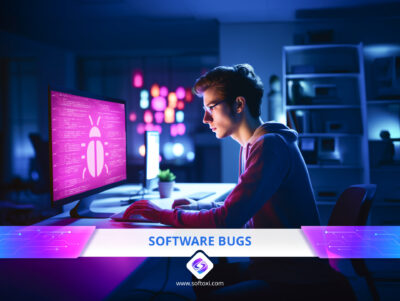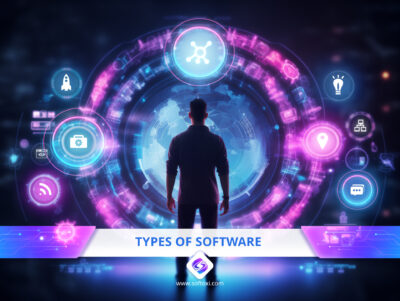Millions of people watch hours of video online every day. There are entire industries around video production and video marketing, helping businesses promote their products in a way that draws in customers. Some people also make a living creating videos, whether instructional videos on YouTube or live-streaming video games.
With the demand growing for high-quality videos, so is the demand for video editors. Luckily, many open-source solutions are available, providing free options for anyone who wants to get started with video editing.
Below, we’ll look at two free video editors, OpenShot and Shotcut, to see how they compare against each other.
OpenShot: An Overview
OpenShot is an open-source video editing tool compatible with Windows, Mac, and Linux devices. It’s a good option for anyone needing a simple video editor for small projects. People who might benefit the most from OpenShot are anyone looking to learn video editing, someone looking for a free editor for a quick project, or small businesses with basic video editing needs.
One key feature of OpenShot is its ease of use. With its drag-and-drop editing style, new users can quickly get started with video projects. Tasks like cutting video, mixing audio, and resizing images are easy with OpenShot. It also offers real-time previews to see your changes as you make them.
Then, there are more advanced features available for more experienced users. Some of these features include:
- Keyframe animation framework
- Image overlays
- 3D animated titles and effects
- Time-mapping
- Digital video effects
These features require more video-editing knowledge, but beginners can learn from numerous online tutorials available.
Another key benefit of OpenShot is its compatibility with multiple video formats. With OpenShot, you can easily burn your video to a DVD or export it directly to video-sharing platforms like YouTube and Vimeo. You can also export your video into multiple file types, including MOV, AVI, FLV, MP4, WEBM, and MPEG.
OpenShot Limitations
There are a few limitations to OpenShot. For starters, some users have reported issues with OpenShot’s engine. You may notice some lagging or crashing issues while using OpenShot. In addition, OpenShot isn’t GPU-accelerated for either encoding or decoding videos. This can lead to slowdowns, especially when working with large files.
OpenShot also lacks some of the advanced features you’ll find in other video editing tools. For example, while OpenShot offers some 3D animations, they aren’t on par with other video editors in terms of graphics. It also lacks a chroma-key (green screen) feature.
OpenShot is a good choice for beginners but possibly unsuitable for someone who needs to edit a movie or make professional videos.
Shotcut: A Detailed Look
Like OpenShot, Shotcut is an open-source video editor for Mac, Windows, and Linux. Compared to OpenShot, Shotcut is likely a better fit for more advanced users or anyone looking to create 4K videos. There are a few features that help set Shotcut apart from its competitors.
For one, Shotcut offers many video and audio effects. These effects make it easier to transform your videos and sounds, and many more are available compared to other video editors. There are at least 50 video filters, such as audio dance visualization, gaussian blur, chroma hold, distort, dither, halftone, key spill, mosaic, old film projector, and sepia tone.
Shotcut also supports both 4K and 8K videos. Few free video editors provide this feature, making Shotcut an excellent choice for producing high-resolution videos. A few other related features include:
- Network stream playback (HTTP, RTMP, RTSP, HLS, MMS, and UDP)
- Webcam capture
- Screen capture
- Native timeline editing
- Optional full-range video input, processing, and export
With Shotcut, you can also convert videos in batches from one file format to another. Similarly, you can export a single video frame as an image or several frames as an image sequence.
Shotcut Limitations
Due to its advanced features, Shotcut can take longer to learn. The steeper learning curve may make Shotcut unsuitable for those who need a simple video editor. Along these lines, Shotcut is likely unsuitable if you want to make a slideshow or video montage due to a lack of existing transitions. Better video editing software options are available if these are the types of projects you want to create.
Shotcut may also be unsuitable if you want to work with a team. Shotcut lacks collaboration tools, sharing tools, and third-party integrations, making it difficult to work on the same project with others.
Due to these missing features, Shotcut is likely best for those users who have some knowledge of video editing but want more advanced features than other free video editors available.
Comparative Analysis: OpenShot vs. Shotcut
OpenShot and Shotcut are both excellent options if you’re looking for a free video editing app. However, depending on your circumstances, one may be a better fit for you.
If you’re new to video editing, OpenShot is likely a better fit. Its user interface is easier for beginners and offers many of the features they need. You can easily edit your videos thanks to OpenShot’s drag-and-drop interface or apply numerous filters to alter your video. Once you finish, OpenShot makes it easy to export your video in various formats or quickly upload your project to video-sharing platforms.
Shotcut, on the other hand, is likely a better fit if you’re an advanced user. You likely may require features such as batch editing, chroma key, screen recording, or 4K video production, all of which Shotcut offers. Shotcut isn’t the most advanced video editing software available, but it’s an excellent choice for anyone who wants more advanced features in a free application.
To determine which video editing app is better for you, consider the type of projects you want to create. If you want to create simple projects like slideshows or video montages, explore OpenShot. For more advanced video production, such as movies, tutorials, or videos involving screen recording, check out Shotcut.
Here is a simple chart outlining how OpenShot and Shotcut compare to one another in key areas:
| Feature | OpenShot | Shotcut |
|---|---|---|
| Price | Free | Free |
| Hardware Acceleration | No | Yes |
| Speed Adjustment | Yes | No |
| Audio Tools | Yes | No |
| 3D Video Editing Tools | Yes | No |
| Text Overlay | Yes | Yes |
| Split/Merge | Yes | No |
User Experience and Community Support
An important consideration when choosing video editing software is how easy it is to learn how to use it. There are a few elements to this. First, how easy is the software to use right from the start? Second, are there resources available to help you learn the software? Finally, is there community support available if you run into an issue or need more guidance?
Let’s look at how these video editing applications stack up in these areas.
OpenShot
OpenShot is easy to use from the start. Even if you don’t know much about video editing, you can likely figure out the basics in OpenShot thanks to its friendly interface. Tasks like cropping a video or adding music are easy enough for the average user to figure out.
Then, to learn more about OpenShot, plenty of resources are available online. OpenShot offers a user guide on its website, which can walk you through all its features. There are also numerous tutorials available on YouTube, which can teach you everything from the basics to more advanced techniques.
If you need assistance, there is community support available. For one, you can contact the OpenShot team directly through their website. If you’d like to talk to other OpenShot users, there’s a community on Reddit with about 12,000 members who can answer your questions.
Shotcut
Shotcut is a little more difficult to use for beginners. This video editing application is geared more toward users with some video editing experience, and the user interface isn’t as intuitive for new beginners. However, if you’ve used video editing applications in the past, you should be able to pick up Shotcut fairly easily.
Shotcut also offers many online guides to help users. On its website, you’ll find video tutorials and how-to guides to walk you through its numerous features. Then, like OpenShot, many video tutorials available on YouTube from users can teach you even more.
As for community support, Shotcut has a forum on its website where users can interact with one another. There’s also a Reddit community for Shotcut users with about 4,000 members.
Related Video Editing Tools and Trends
While OpenShot and Shotcut are two of the top video editing software tools, they’re far from the only tools available. Many users look for two increasingly popular features: AI video editing and live stream editing. For example, with AI video editing tools, users can quickly create subtitles for their videos or transcribe the audio and translate it into another language. Thousands of live-streamers also require solid video editing tools to earn a living.
Other video editors may do the trick if OpenShot or Shotcut don’t meet your needs. Below are four popular Shotcut and OpenShot alternatives and their key features:
Davinci Resolve
- VFX software
- Audio transcription
- Color grading
Apple iMovie
- Integrates with iMovie for iOS and Final Cut Pro
- Compatible with Cinematic mode on iPhones
- Numerous transitions, effects, and audio clips are available
Veed.io
- Automatically add subtitles
- Audio transcription and translations
- Video optimization
Clipchamp
- Browser-based
- Numerous video templates are available.
- No watermarks
- Chroma key
Shotcut vs OpenShot: Which One Is Right for You?
Shotcut and OpenShot are both excellent choices if you’re looking for a free video editor. If you’re new to editing and just want to create simple videos, you may prefer to start with OpenShot. Users with a bit more experience or who need slightly more advanced features may prefer to start with Shotcut. However, since both products are free to use, you should consider experimenting with both to see which suits your needs better.




